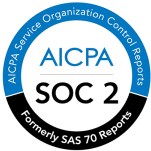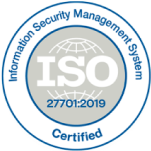The advent of FinOps
In this era of fast digital transformation, the Cloud holds the key. According to a report by McKinsey, businesses will realize more than $1 trillion of EBITDA with a public cloud by 2030. Fast-moving digital companies are accelerating at a rapid pace to access this massive value pool by building a customer-centric business landscape, utilizing the speed, scale, and innovation of the cloud.
However, to attain the desired outcomes, companies need a clear understanding of cloud-value economics. The cloud is notorious for complexity and hidden costs which can wear down the profit margins in the blink of an eye. As per this report from KPMG, 66% of businesses believe their cloud costs are spiraling out of control. The reason for this is the underlying complexity in managing cloud infrastructure. The failure to adapt to the nuances of cloud resources and expecting them to behave like legacy systems is another reason. Complex billing structures, myriad server options, inability to gauge future requirements, and an ineffective cloud cost analysis mechanism - all simply add up to excessive spending while struggling to balance the value of cloud agility and the costs associated with it.
Enter Cloud FinOps, a collaboration of IT and finance to have greater control on cloud cost management and generate better and optimized business returns. Cloud FinOps allows companies to be more mindful of the cloud architecture, resource provisioning, and cloud platform - in fact, the entire value chain. The objective is to create a culture of accountability and visibility, where cross-functional teams align cloud costs with the business goals.
Benefits of Cloud FinOps
Although Cloud FinOps improves the ability of a cloud organization to operate at scale and much more efficiently, it helps achieve the following tangible benefits:
- Reduced cloud computing costs
- Improved business profitability
- Better collaboration and decision-making
- Increased transparency
Cloud FinOps Strategies
While the benefits of Cloud FinOps are manifold, there are certain strategies that must be implemented to achieve optimal results in cloud FinOps. Let us look at the “secret” strategies in detail today.

1. Auto Scaling for optimal cloud resource utilization:
Auto Scaling is the one benefit that can ease much of your cloud resource utilization pains. It enables automatic allocation or removal of resources based on changing workloads or demand, thus avoiding over-provisioning or under-provisioning of resources. Businesses can avail a number of autoscaling strategies - primarily horizontal auto scaling and vertical auto scaling - to manage the fluctuating demands. Others include predictive auto scaling, reactive autoscaling, hybrid auto scaling, etc.
Benefits of Auto Scaling:
- Auto Scaling ensures that resources are always available to users.
- Performance is optimal because of workload and resource alignment. Issues such as latency are also taken care of.
- Auto scaling helps in reduced costs as it avoids over-provisioning of resources.
- Scaling of AWS systems is possible because of the automatic addition or removal of resources.
However, while configuring the auto scaling mechanism, one has to be mindful of the system characteristics. Needless to say, each system and application is unique. Whether the cloud system requires compute power, or storage is a factor that must be embedded in the auto scaling rules.
2. Utilize resource tagging:
Effective tagging is key to Cloud FinOps and cloud cost analysis so much that it is no longer a best practice - it has become an absolute necessity. With tagging, it is possible to gain better visibility into the cloud spend. By implementing an effective cloud tagging strategy, businesses can enjoy accurate cloud cost allocation, monitor cloud resource utilization, and predict future cloud expenses.
Tags are basically meta-data labels made of a combination of user-defined keys and values (e.g. AWS cost allocation tag). Tagging cloud resources enables businesses to easily manage, identify, organize, and search through information that otherwise would be impossible - especially at scale. It is possible to categorize resources by purpose, owner, environment, etc., resulting in better visibility, accountability, allocation, cost reporting and more. Tags add even greater value when it comes to compliance, as they allow for proper classification, audit, and reporting of assets - thus meeting stringent modern-day regulatory requirements.
Beyond cost reporting and resource management, tagging can also help in automation within the cloud environment.
3. Set up anomaly alerts for cloud cost monitoring:
Cloud costs can spike unexpectedly because of fluctuations in the costs associated with cloud computing services, resources, and cloud infrastructure usage. Such accidental overspending can set you back by a large cloud bill, thus damaging your business bottom line. The threshold for deviation or the anomaly margin may differ depending on the size and type of the organization, the amount of cloud consumption, and other aspects.
One of the most common reasons for anomaly is system misconfiguration - such as, an autoscaling misconfiguration can cause a rapid increase in asset allocation, thus pushing up the cloud bills.
Thus, it is very important to set up anomaly alerts that would notify in case of a resource over-spend. However, setting up a baseline is also critical, otherwise, every single fluctuation could be alerted as an anomaly. Major cloud providers provide their own cost anomaly detection tools that use machine learning to notify users about any abnormal cloud spending. For example, the AWS cost monitoring console allows the setting up of such alerts and in fact can also throw light on the causes of such anomalies.
Businesses can also utilize third-party cloud cost analytics tools like CloudKeeper Lens to set up cost anomaly alerts.
4. Use Savings Plan/Reserved Instances:
Intelligently utilizing Savings Plans and Reserved Instances offered by cloud providers can reduce your cloud bills by up to 70%. Hence they are a critical pillar in a Cloud FinOps strategy.
Reservations and Savings Plans are cost-saving mechanisms offered by major cloud providers (e.g., AWS, Azure, Google Cloud) that offer huge discounts, provided there’s a usage commitment over a period of time. They are ideal for steady-state and long-running workloads. Here’s how to utilize Reservations and Savings Plans effectively:
Reserved Instances: With Reserved Instances, businesses can commit to using specific resources (e.g. EC2 instances in AWS or VMs in Azure) or databases, for a fixed term (usually one or three years) in return for a significant saving, as compared to on-demand prices. Automated Reserved Instance management is also an offering that can ease the process of reservations.
Savings Plans: More flexible than reservations, with savings plans, one can commit to a specific dollar amount per hour for a particular type of usage (e.g., compute, EC2 instances). The extent of saving will depend on the level of commitment.
Reservations or Savings plans typically involve committing usage for a longer period of time. Given the underlying complexity of the billing structures of cloud providers, it is crucial that someone with strategic planning capabilities over the cloud is engaged in implementing Reservations or Savings Plans efficiently, maximizing cost savings, and ensuring a well-optimized and cost-effective cloud infrastructure.
5. Invest in a Cloud FinOps management solution:
Cloud systems are notorious for the complexity of underlying technologies and financial structures. While companies might opt for an internal management model for FinOps, however, it is a no-brainer that someone with proven experience can be a game-changer for any business. An efficient Cloud FinOps partner can not only help in cloud cost optimization, but also help achieve the right balance between cost, agility, and quality. CloudKeeper is one such partner that has helped more than 300+ companies achieve savings of more than $100 Mn by offering end-to-end Cloud FinOps and cost optimization solutions.
Culture of cost awareness and accountability
Beyond the aforementioned 5 strategies, one strategy that is often ignored is building a culture of cost awareness and accountability. Cloud FinOps is more than a method - it is a cultural shift that requires cross-functional collaboration among IT, finance, and business teams. Fostering a FinOps mindset ensures sustainable cost optimization. Companies need to invest in FinOps centers of excellence dedicated to standardizing cloud best practices that best serve the organizational objectives.
Cloud cost management through FinOps is not a one-time activity—it's an ongoing journey that demands commitment, collaboration, and adaptability. By continuously monitoring your spending, analyzing the usage patterns, and maneuvering your strategies, businesses can reap the full benefits of cloud computing while maintaining financial prudence and driving greater business success.
When it’s about a one-stop solution for all your cloud cost optimization needs, CloudKeeper stands tall as the best choice out there. With a wide array of offerings that help you optimize your entire cloud infrastructure, CloudKeeper delivers instant and guaranteed cloud savings, in-depth cost analytics, and expert-backed optimization guidance.
Want to learn more? Book a free demo!









